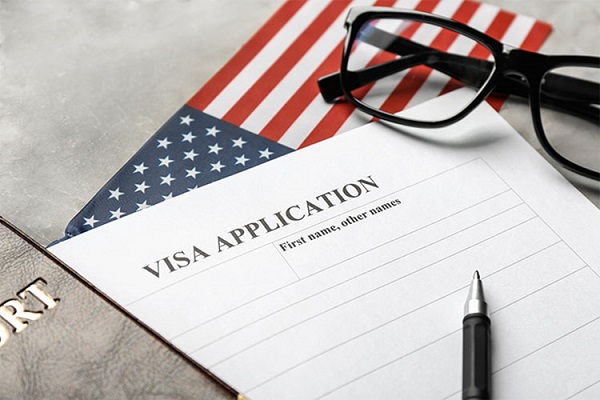The USA EB-5 Visa, also known as the Immigrant Investor Program, is a unique and attractive pathway for individuals seeking to obtain permanent residency in the United States. Established by the U.S. government, the EB-5 program offers foreign investors and their families an opportunity to live, work, and study in the United States, while simultaneously contributing to the country’s economic growth. This visa program is designed to encourage investment in job-creating projects and stimulates the U.S. economy, making it a win-win for both investors and the nation.
To apply for a USA EB-5 Visa, prospective investors must fulfill certain criteria and follow a specific set of steps. This includes making a substantial investment in a new commercial enterprise that leads to the creation or preservation of jobs for U.S. workers. The program has gained popularity due to its potential for providing a direct path to U.S. permanent residency, and ultimately, U.S. citizenship, for the investor and their immediate family members.
In this comprehensive guide, we will walk you through the essential aspects of applying for a USA EB-5 Visa. We’ll discuss the eligibility requirements, investment options, the application process, and the benefits of this program. Whether you are an entrepreneur seeking new opportunities, a parent looking to provide your children with a high-quality education, or an individual aspiring to build a future in the United States, the EB-5 Visa program may be the ideal avenue for you to achieve your immigration goals.
By the end of this guide, you will have a clear understanding of what it takes to apply for the USA EB-5 Visa and how this program can open doors to a promising and prosperous future in the United States. So, let’s embark on this journey to explore the world of the EB-5 Visa program and discover how you can make your American dream a reality.
What is The USA EB-5 Visa
The EB-5 Visa Program, or Employment-Based Fifth Preference Visa Program, is an immigrant investor program in the United States. It was created by the U.S. government in 1990 to stimulate the U.S. economy through job creation and capital investment by foreign investors. The program is overseen by U.S. Citizenship and Immigration Services (USCIS).
Under the EB-5 program, foreign nationals can obtain a U.S. green card (permanent residency) for themselves and their immediate family members by making a qualifying investment in a new commercial enterprise in the United States.
Categories of USA EB-5 Visa
The EB-5 Visa is an immigrant investor program in the United States that allows foreign investors and their immediate families to obtain a U.S. green card by investing in a new commercial enterprise that creates jobs. There are two main categories of the EB-5 Visa program:
1. Direct Investment (Basic Program):
Under the basic EB-5 program, an investor must invest a minimum of $1.8 million in a new commercial enterprise.
The investment must create or preserve at least 10 full-time jobs for qualifying U.S. workers within two years of the investor’s admission to the United States.
If the investment is made in a targeted employment area (TEA), which is either a rural area or an area with high unemployment, the minimum investment is reduced to $900,000.
2. Regional Center Program:
The Regional Center program is a popular choice for EB-5 investors because it allows for indirect job creation through the investment in a USCIS-designated Regional Center. Regional Centers are private or public entities that promote economic growth and investment in a specific geographic area.
Investors can either invest $1.8 million or $900,000 in a new commercial enterprise associated with a Regional Center, depending on whether it’s in a TEA or not.
Unlike the direct investment program, the job creation requirement can include both direct and indirect jobs, making it easier for investors to meet the job creation criteria.
The Regional Center program offers greater flexibility and is often the preferred option for many EB-5 investors.
In both categories, the investor and their immediate family members (spouse and unmarried children under 21) are eligible to apply for conditional green cards, which are valid for two years. To remove the conditions and obtain permanent green cards, investors must demonstrate that they have maintained their investment and that the required jobs have been created or preserved.
Requirements To Apply For USA EB-5 Visa
The EB-5 Immigrant Investor Visa program is a U.S. immigration program that provides a path to lawful permanent residency (green card) for foreign investors who make a significant investment in a new commercial enterprise that creates jobs in the United States.
To apply for a USA EB-5 visa, there are several requirements that investors must meet. These requirements include:
1. Investment Amount:
Investors must invest a minimum amount of capital in a new commercial enterprise. There are two investment thresholds:
- $1.8 million: The standard minimum investment amount for most projects.
- $900,000: The reduced minimum investment amount for targeted employment areas (TEAs), which are rural areas or areas with high unemployment.
2. Job Creation:
The investment must create or preserve at least 10 full-time jobs for qualifying U.S. workers within two years of the investor’s admission to the United States as a conditional permanent resident.
3. At-Risk Investment:
The investment capital must be at risk and used for job creation, and it should be invested in a for-profit new commercial enterprise. Passive investments, such as investing in publicly traded stocks or bonds, do not qualify.
4. New Commercial Enterprise:
The investment must be made in a new commercial enterprise, which is generally defined as a for-profit business formed after November 29, 1990, or a business that was restructured, reorganized, or expanded in such a way that it effectively functions as a new commercial enterprise.
5. Involvement in the Business:
The investor must be involved in the day-to-day management or policy formation of the enterprise. Alternatively, if the investor is not actively involved in management, they can participate as a limited partner or a similar role.
6. Legal Source of Funds:
The investor must provide evidence of the lawful source of the investment funds used in the EB-5 investment. The U.S. government requires documentation to prove that the funds were obtained legally.
7. Conditional Green Card:
Initially, investors and their immediate family members (spouse and unmarried children under 21) receive a conditional green card valid for two years. To remove the conditions, the investor must file a petition to remove conditions within the 90-day period before the two-year anniversary of receiving the conditional green card.
8. Consular Processing or Adjustment of Status:
Investors can apply for an EB-5 visa by filing Form I-526 (Immigrant Petition by Alien Investor). If the petition is approved, investors outside the U.S. must go through consular processing, while those in the U.S. may adjust their status to conditional permanent resident.
9. Biometrics and Background Checks:
Applicants will be subject to biometrics collection and background checks during the application process.
Documents Required To Apply For USA EB-5 Visa
The EB-5 Immigrant Investor Program is a U.S. visa program that provides a path to lawful permanent residency (a green card) for foreign nationals who invest a significant amount of money in a new commercial enterprise that creates jobs in the United States.
To apply for the EB-5 visa, you will need to submit a comprehensive set of documents, and the process can be complex.
Here are the main documents required for the EB-5 visa application:
1. Form I-526, Immigrant Petition by Alien Investor:
This is the primary form to initiate the EB-5 process. It includes information about the investor’s personal background, investment details, and supporting documents.
2. Evidence of Investment:
You must provide documentation to prove that you have invested or are in the process of investing the required capital (either $1.8 million or $900,000 if the investment is made in a targeted employment area).
3. Business Plan:
A comprehensive business plan for the new commercial enterprise showing job creation and financial projections. This should detail how the investment will be used to create jobs and sustain the business.
4. Source of Funds Documentation:
This is a critical component of the application. You must document the lawful source of the invested funds. This may include bank statements, tax records, business records, and any other relevant financial documents.
5. Job Creation Evidence:
You must provide evidence that the investment has created or will create at least 10 full-time jobs for qualifying U.S. workers within two years of the immigrant investor’s admission to the United States. This could include payroll records, I-9 forms, and other employment records.
6. Personal Documents:
Personal identification documents, such as a passport, birth certificate, and marriage certificate (if applicable).
7. Medical Examination:
A medical examination report, conducted by a designated civil surgeon, as required for all immigrant visa applicants.
8. Visa Application Forms:
Forms DS-260 (for the investor) and DS-261 (Choice of Address and Agent) for the investor and family members applying for the visa.
9. Visa Processing Fees:
Payment of the required visa processing fees.
10. Photographs:
Passport-sized photographs that meet U.S. visa photo requirements.
11. Police Clearance Certificates:
From the investor’s country of residence and any other country where the investor has lived for a certain period, demonstrating that they have no criminal record.
12. Affidavit of Support (Form I-864):
If applicable, this form may be required if the investor does not meet certain income and asset requirements.
13. Consular Processing Documents:
If you are applying for the visa through consular processing, you will need to provide additional documents specific to the U.S. embassy or consulate in your home country.
How to Apply for USA EB-5 Visa
Applying for a USA EB-5 visa, also known as the Immigrant Investor Program, is a multi-step process that involves making a substantial investment in a new commercial enterprise that creates jobs for U.S. workers.
Here’s a general overview of the application process:
1. Determine Eligibility:
You must invest $1.8 million in a new commercial enterprise, or $900,000 if the investment is made in a targeted employment area (TEA), which is either a rural area or an area with high unemployment.
Your investment must create or preserve at least 10 full-time jobs for qualifying U.S. workers within two years of your admission as a conditional permanent resident.
2. Choose Your Investment:
You can make your investment directly in a new commercial enterprise that you establish or indirectly through a Regional Center, which is a USCIS-approved entity that pools investments for larger job creation projects.
3. Source of Funds:
You must demonstrate that the capital you are investing has been lawfully obtained. Document the source of your investment funds to satisfy USCIS requirements.
4. File Form I-526:
The initial step is filing Form I-526, Immigrant Petition by Alien Investor, with U.S. Citizenship and Immigration Services (USCIS). You must include the required supporting documentation.
5. Wait for I-526 Approval:
USCIS will review your I-526 petition, and if approved, you’ll receive a notice of approval.
6. Apply for a Visa:
If you are residing outside the U.S., you can apply for an immigrant visa at a U.S. Embassy or Consulate. If you are already in the U.S. on a different visa, you can apply for adjustment of status to become a conditional permanent resident.
7. Conditional Permanent Residency:
If your EB-5 petition is approved, you will initially receive conditional permanent residency for two years.
8. File Form I-829:
To remove the conditions on your permanent residency, you must file Form I-829, Petition by Investor to Remove Conditions on Permanent Resident Status, within the 90-day period immediately before the second anniversary of your conditional permanent resident status. This application is to demonstrate that your investment has created or preserved the required jobs.
9. Permanent Residency:
If USCIS approves your I-829 petition, you will be granted unconditional lawful permanent residency in the United States.
10. Apply for U.S. Citizenship (Optional):
After being a permanent resident for five years (or three years if married to a U.S. citizen), you may be eligible to apply for U.S. citizenship if you meet the other naturalization requirements.
EB-5 Visa vs. Other Investor Visas
The EB-5 visa is one of several investor visas available in the United States. Each investor visa category has its own specific requirements and benefits. Here’s a comparison of the EB-5 visa with other popular investor visas:
1. EB-5 Visa:
- Minimum Investment: The EB-5 program requires a minimum investment of $1.8 million in a new commercial enterprise. However, if the investment is made in a Targeted Employment Area (TEA), which is either a rural area or an area with high unemployment, the minimum investment is reduced to $900,000.
- Job Creation: Investors must create or preserve at least 10 full-time jobs for qualifying U.S. workers within two years of the immigrant investor’s admission to the U.S.
- Source of Funds: Investors must demonstrate that the invested capital comes from legal sources.
- Immigration Status: The EB-5 program leads to conditional permanent residency for the investor, their spouse, and their unmarried children under 21. After two years, the conditions can be removed to obtain permanent residency.
2. E-2 Visa:
- Minimum Investment: There is no specific minimum investment requirement for an E-2 visa. However, the investment must be “substantial” and the amount can vary depending on the type of business.
- Nationality Requirement: E-2 visas are available to individuals from countries that have a treaty of commerce and navigation with the United States.
- Duration: E-2 visas are typically issued for two to five years and can be renewed indefinitely as long as the business remains operational and the investor meets the visa requirements.
- No Path to Permanent Residency: The E-2 visa does not provide a direct path to permanent residency or citizenship in the United States.
3. L-1 Visa:
- Investment Requirement: The L-1 visa is for intracompany transferees and does not require a direct investment in a U.S. business. Instead, it is for employees of a foreign company coming to the U.S. to work for a related U.S. entity.
- Duration: L-1 visas are issued for up to five years for managers and executives, and up to seven years for specialized knowledge employees.
- No Path to Permanent Residency: Like the E-2 visa, the L-1 visa does not provide a direct path to permanent residency.
4. E-5 Visa (Startup Visa):
- Minimum Investment: This is a proposed visa category for foreign entrepreneurs seeking to start businesses in the United States. The minimum investment requirements would vary, but the goal is to attract innovative entrepreneurs.
- Job Creation: The E-5 visa is expected to require the creation of a certain number of jobs for U.S. workers.
- Status: As of my last knowledge update in September 2021, the E-5 visa had not been implemented. It’s important to check for any updates or changes to U.S. immigration laws.
Frequently Asked Questions
1. How much money do I need to invest for an EB-5 Visa?
The minimum investment amount is $1.8 million, but if you invest in a Targeted Employment Area (TEA), which includes rural areas or regions with high unemployment, the minimum investment is reduced to $900,000.
2. What is a Targeted Employment Area (TEA)?
A TEA is an area with high unemployment or in a rural region. Investing in a project located in a TEA allows you to meet the lower investment threshold of $900,000.
3. Do I need to create jobs to qualify for an EB-5 Visa?
Yes, one of the key requirements is to create or preserve a minimum of 10 full-time jobs for qualifying U.S. workers within two years of the immigrant investor’s admission to the U.S.
4. Can I invest in an existing business to obtain an EB-5 Visa?
Yes, you can invest in an existing business, but you generally need to create new jobs or significantly restructure the business to qualify.
5. Is there an age limit for EB-5 Visa applicants?
There is no age limit for EB-5 Visa applicants.
6. Can I include my family in my EB-5 Visa application?
Yes, the immediate family members (spouse and unmarried children under 21) of the EB-5 investor can be included in the application and obtain green cards as well.
7. What is the process for applying for an EB-5 Visa?
The process typically involves selecting and investing in a qualifying project, filing an I-526 petition to establish your eligibility, obtaining conditional permanent residency, and then applying to remove the conditions on your green card (I-829 petition) after the required jobs have been created.
8. How long does it take to get an EB-5 Visa?
The processing time can vary, but it generally takes several years, including both the initial conditional green card period and the later removal of conditions.
9. Are there any annual limits on EB-5 Visas?
There is an annual limit of 10,000 EB-5 Visas, but this includes both the main investors and their immediate family members.
10. What are the tax implications of obtaining an EB-5 Visa?
EB-5 investors are subject to U.S. taxation on worldwide income, so it’s important to understand and plan for your tax obligations.
11. Can I choose any type of investment for the EB-5 Visa, or are there restrictions?
Investments must be made in a for-profit new commercial enterprise. There are some restrictions on the type of businesses that qualify.
12. What happens if my EB-5 project fails or doesn’t create the required jobs?
If your project fails or doesn’t create the required jobs, you may not be able to remove the conditions on your green card, and your residency status could be at risk.
Final Note
In conclusion, the USA EB-5 Visa program is a unique and attractive pathway for foreign investors seeking to obtain permanent residency in the United States. By making a qualifying investment in a new commercial enterprise, applicants and their families can not only realize their American dream but also contribute to the growth of the U.S. economy.
This program has consistently served as a bridge for immigrants to access the opportunities and benefits that the United States offers, while simultaneously stimulating job creation and economic development in various regions of the country.
While the EB-5 Visa program has faced periodic changes and legislative updates, its fundamental objective remains the same: to promote investment, job creation, and economic prosperity in the United States. As potential investors consider this pathway, it’s crucial to remain informed about the program’s specific requirements, regional center options, and investment thresholds, as these factors may evolve over time.
Please note that immigration laws and regulations are subject to change so it is crucial to consult with an immigration attorney or visit the official U.S. Citizenship and Immigration Services (USCIS) website for the most up-to-date information and requirements before applying for an EB-5 visa.






